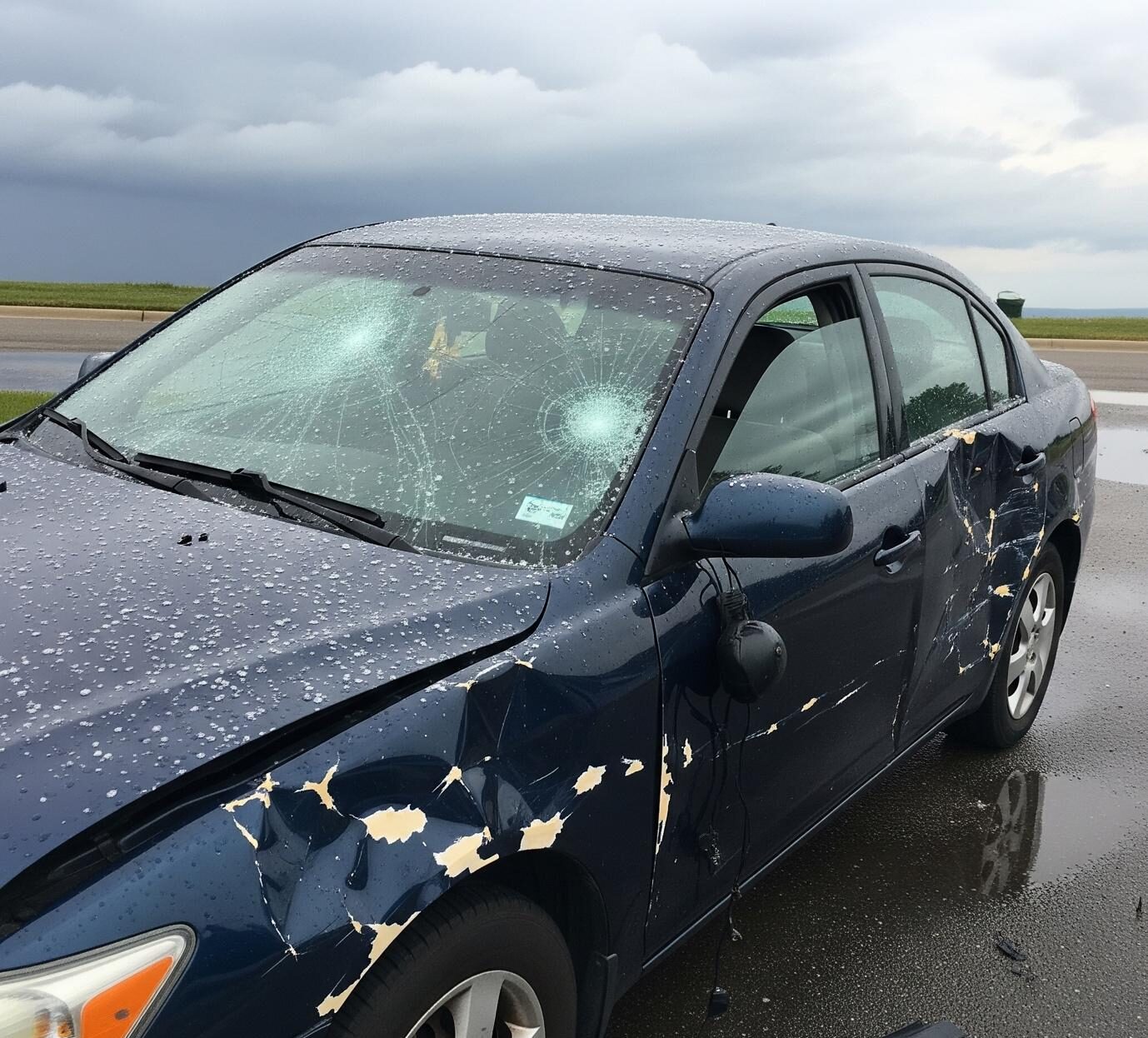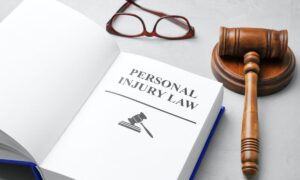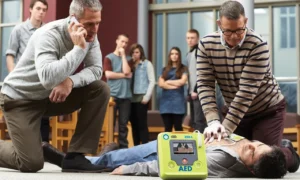A hailstorm can transform your vehicle in moments, which means you might notice dents peppering the hood, cracked glass, and perhaps chips in the paint. Your impulse might be to get back behind the wheel and head somewhere safe, or maybe you are wondering if even taking it to a repair shop is wise.
There is a lot more to consider than meets the eye when assessing whether a hail-damaged car remains roadworthy, from safety concerns to insurance implications. So, let’s walk through everything you should weigh before turning the ignition.
Why Driving a Hail-Damaged Car is Unsafe?
Even minor hail damage can create long-term issues that are not visible at first glance. From weakened glass to hidden structural problems, driving without repairs can compromise safety and lead to higher costs later.
A hail-damaged vehicle is nothing but a liability in terms of safety. In the Lone Star state, where hailstorms are nothing short of brutal, finding reliable auto hail repair in Texas is a necessity to keep your vehicle safe, functional, and looking its best.
Here are some of the most important reasons you should avoid driving a hail-damaged vehicle.
Risk of Compromised Windshields
Hail often strikes with enough force to chip, crack, or even shatter automotive glass. Even minor chips may seem inconsequential, but they can quickly expand due to temperature fluctuations or road vibrations.
A compromised windshield significantly reduces structural integrity and can fail to protect vehicle occupants during a collision. In fact, a properly installed and intact windshield provides up to 45% of a vehicle’s structural strength in a front-end crash.
In addition, driving with weakened glass also impairs visibility and increases the risk of serious injury if the windshield fails.
Potential for Water Leaks and Electrical Issues
Hail damage does not always stop at dents in the metal. It can break weather seals, create small gaps in window fittings, and weaken paint layers that protect your car’s body.
Once water enters the vehicle, it can damage upholstery, carpeting, and the wiring beneath your dashboard. Electrical systems, such as sensors, infotainment screens, and even the ignition system, can fail due to prolonged moisture exposure.
Mold growth is another concern, as trapped water in a vehicle’s interior can lead to unpleasant odors and health hazards. Repairing these problems after they develop is often more costly and time-consuming than addressing the hail damage immediately.
Tires and Wheel Alignment Concerns
Although tires may not be the first thing you associate with hail damage, driving over hailstones or storm debris can create issues such as uneven wear, small punctures, or compromised sidewalls.
Storm runoff can also wash sharp objects into the road, increasing the risk of tire damage. In addition, severe hailstorms can be accompanied by winds strong enough to knock a vehicle slightly out of alignment if debris is struck at speed.
Misaligned wheels may cause handling problems, which become dangerous in wet conditions. A quick inspection for bulges, cuts, or uneven tread wear can help prevent a roadside emergency.
Structural or Panel Damage
Large hailstones can dent body panels, bend trim, and in some cases, cause structural damage to the roof or hood. While cosmetic issues may seem minor, deeper dents can weaken metal over time, making it more vulnerable to rust and corrosion.
Corrosion can undermine crash protection by reducing the strength of structural components. Check your car’s roofline, hood, and trunk lid carefully, as damage in these areas can be easy to overlook yet expensive to fix later if left untreated.
Problems with Lights and Signals
Your headlights, brake lights, and turn signals are essential for visibility and communication with other drivers. Hail can crack light housings, shatter bulbs, or loosen wiring connections.
Even a hairline fracture in a light cover can allow water to seep inside and lead to electrical shorts or fogging that reduces brightness. Since reduced lighting can make it harder for others to see you, especially in rainy or foggy post-storm conditions, it is important to test all lights immediately after a hailstorm and then only take the risk to get on the road.
Impact on Vehicle Resale Value
Even if hail damage doesn’t immediately affect how your car drives, it’s wise to avoid using a vehicle with visible dents, cracked glass, or paint chips. Driving a hail-damaged car can worsen existing imperfections, further lowering its resale value over time.
Buyers are quick to spot damage and often use it as leverage to reduce their offer, or may even avoid purchasing the vehicle altogether due to concerns about hidden structural issues. Addressing repairs promptly and avoiding driving a damaged car not only allows you to restore your car’s appearance but also helps protect its long-term market value.
What Happens After You Discover Hail Damage?
Acting promptly after hail helps prevent further deterioration and ensures that insurance claims and repairs go as smoothly as possible. Here is what to do.
- Document the damage with clear photos from multiple angles, including close-ups and wide shots.
- Review your insurance policy to confirm hail damage coverage and understand your deductible.
- File your claim promptly to avoid delays during peak post-storm repair demand.
- Arrange a professional inspection to uncover hidden structural or paint issues.
- Select the most suitable repair method, such as Paintless Dent Repair, when appropriate.
- Protect your vehicle from additional damage by parking under cover or using a quality car cover until repairs are complete.
Final Thoughts
Driving a hail-damaged car may seem harmless if the issues appear cosmetic, but even small cracks, dents, and misalignments can have long-term safety and financial consequences.
From weakened windshields to compromised lighting and electrical systems, the risks extend beyond appearance. A careful post-storm inspection, combined with timely repairs, can help preserve your vehicle’s value and ensure it remains safe to drive.
Remember, storms are unpredictable, but preparation and quick action afterward give you the best chance of avoiding costly repairs or dangerous situations. The sooner damage is assessed and addressed, the more likely it is that repairs will be simpler and less expensive.
Treat every hail event as an opportunity to protect both your investment and your safety.



































